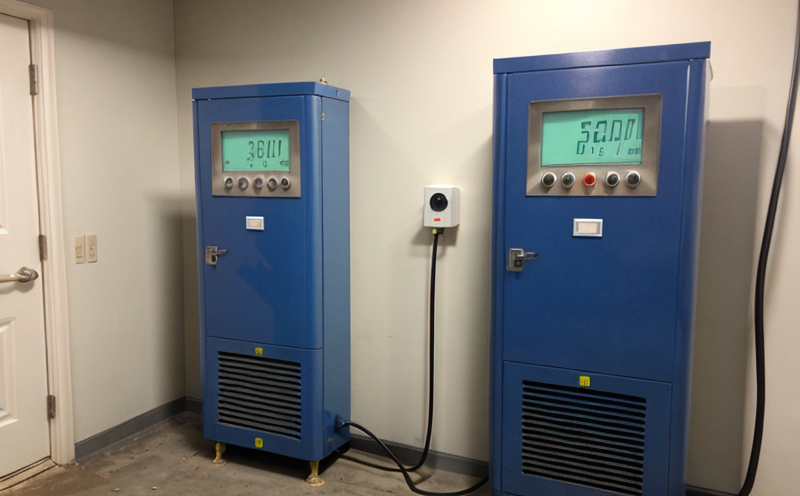EN 15259 Measurement of Stationary Source Gas Emissions Testing
The EN 15259 standard is a comprehensive guideline for the measurement of stationary source gas emissions in the mining sector. This service ensures that gases such as carbon monoxide, nitrogen oxides, sulfur dioxide, and other harmful substances are accurately measured to comply with strict environmental regulations.
The testing process involves several critical steps: first, the selection of appropriate sampling points is crucial for obtaining representative samples. Sampling locations should be strategically chosen to ensure they capture emissions from all relevant sources within the mining facility. This might include exhaust stacks, ventilation ducts, and other areas where significant gas emissions occur.
Once the sampling points are selected, the next step is sample collection. This requires specialized equipment capable of handling various types of gases under different conditions. The collected samples must then be transported to a certified laboratory for analysis using high-precision instruments like gas chromatographs or Fourier Transform Infrared Spectrometers (FTIR).
After collection and transport, the samples undergo rigorous analytical procedures outlined in EN 15259. These include calibration of equipment against known standards, ensuring accurate measurement units, and adhering to strict temperature and humidity controls during analysis.
The results from this testing are crucial for several reasons. They provide essential data needed by mining companies to maintain compliance with environmental laws, protect worker health and safety, optimize operational efficiency, and ensure long-term sustainability of the mine site.
| Application | Description |
|---|---|
| Mining Facilities | Monitoring emissions from various sources like exhausts and ventilation systems to ensure compliance with local regulations. |
| Processing Plants | Measuring gases released during ore processing for regulatory adherence. |
| Transportation Networks | Evaluating emissions along transportation routes within mining operations. |
The testing process also helps in identifying potential areas of improvement within the mine's ventilation system. By pinpointing where leaks or inefficiencies exist, mines can implement corrective measures to enhance overall performance and reduce unnecessary emissions.
Understanding these complexities requires expertise not just in laboratory techniques but also a deep understanding of mining operations. Our team combines this knowledge with state-of-the-art technology to deliver reliable results that meet stringent standards set forth by international bodies like ISO or EN.
| Use Case | Description |
|---|---|
| Emission Reporting | Providing detailed reports required for regulatory compliance purposes. |
| Risk Assessment | Identifying risks associated with high levels of harmful gases in the working environment. |
| Operational Optimization | Determining optimal settings for ventilation systems to minimize emissions while maximizing efficiency. |
In summary, EN 15259 testing plays an indispensable role in ensuring sustainable and environmentally responsible mining practices. Through precise measurement techniques and thorough analysis, we help our clients stay ahead of regulatory requirements and contribute positively towards protecting the environment.
Applied Standards
The primary standard governing this service is EN 15259 which provides detailed methodologies for measuring stationary source gas emissions. Compliance with these standards ensures accurate and consistent results across different environments and facilities.
In addition to EN 15259, other relevant international standards include ISO 14031 and ASTM D6877. These additional guidelines further reinforce the accuracy and reliability of our testing services by providing supplementary frameworks for sampling techniques, analytical methods, and reporting procedures.
Our laboratory adheres strictly to these internationally recognized norms ensuring that all measurements are conducted under controlled conditions using calibrated equipment. This commitment to standards ensures consistent quality and validity in every test result produced.
Industry Applications
| Application | Description |
|---|---|
| Mining Facilities | Monitoring emissions from various sources like exhausts and ventilation systems to ensure compliance with local regulations. |
| Processing Plants | Measuring gases released during ore processing for regulatory adherence. |
| Transportation Networks | Evaluating emissions along transportation routes within mining operations. |
The data obtained from these tests serves multiple purposes including emission reporting, risk assessment, and operational optimization. For instance, when it comes to emission reporting, the detailed reports generated help mine operators meet stringent regulatory requirements set by various authorities worldwide.
For risk assessments, identifying high-risk areas based on elevated concentrations of harmful gases allows for targeted interventions aimed at reducing potential hazards. Lastly, optimizing ventilation systems ensures better air quality inside mines which not only improves working conditions but also enhances productivity and safety levels among workers.
Use Cases and Application Examples
| Use Case | Description |
|---|---|
| Emission Reporting | Providing detailed reports required for regulatory compliance purposes. |
| Risk Assessment | Identifying risks associated with high levels of harmful gases in the working environment. |
| Operational Optimization | Determining optimal settings for ventilation systems to minimize emissions while maximizing efficiency. |
Our clients benefit from this service by gaining insights into their operational processes that can lead to significant improvements. By leveraging the knowledge gained through these tests, mines are better equipped to manage their environmental impact effectively and efficiently.
This approach not only enhances safety standards but also contributes positively towards achieving sustainability goals set forth by organizations like the United Nations Environment Programme (UNEP).





